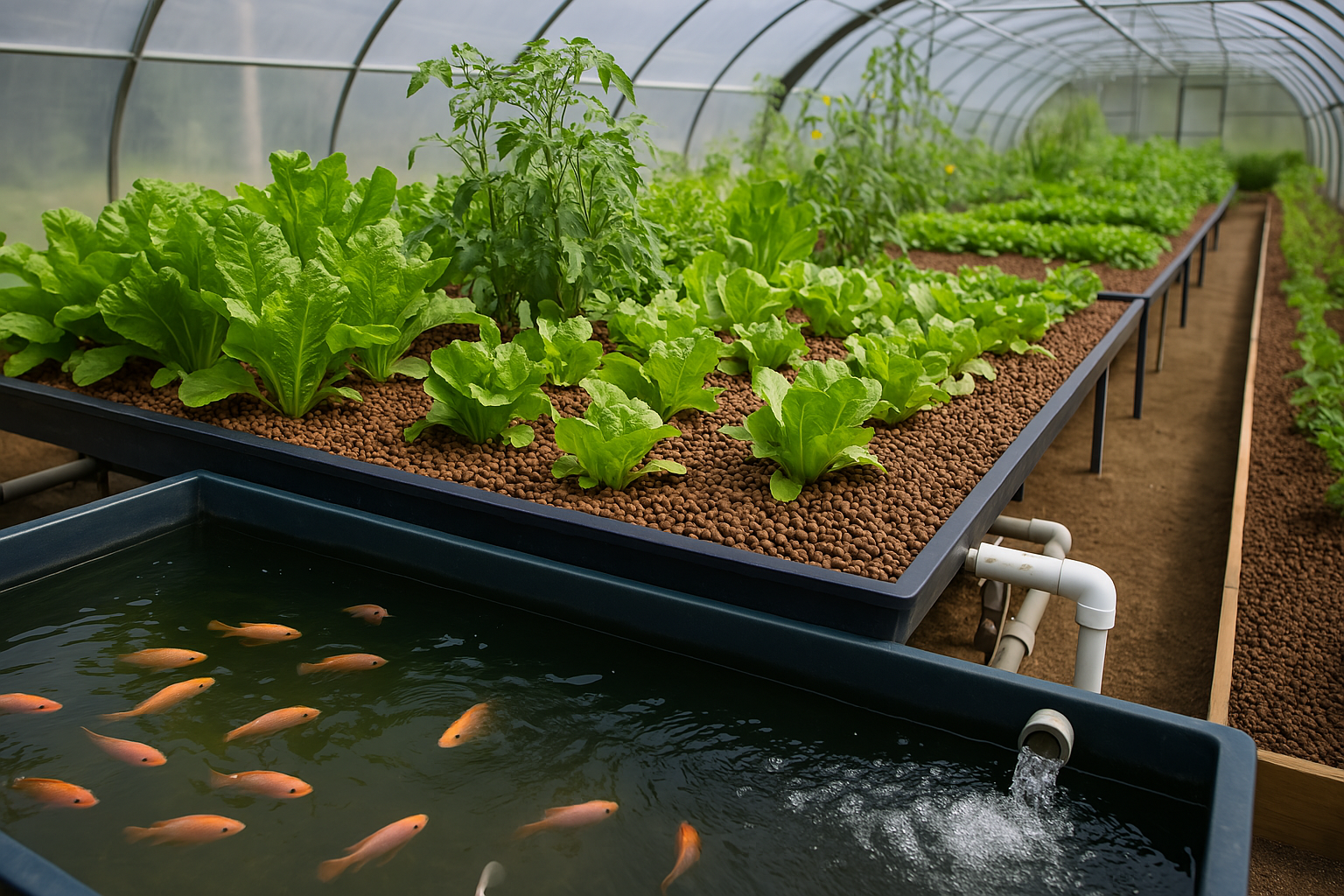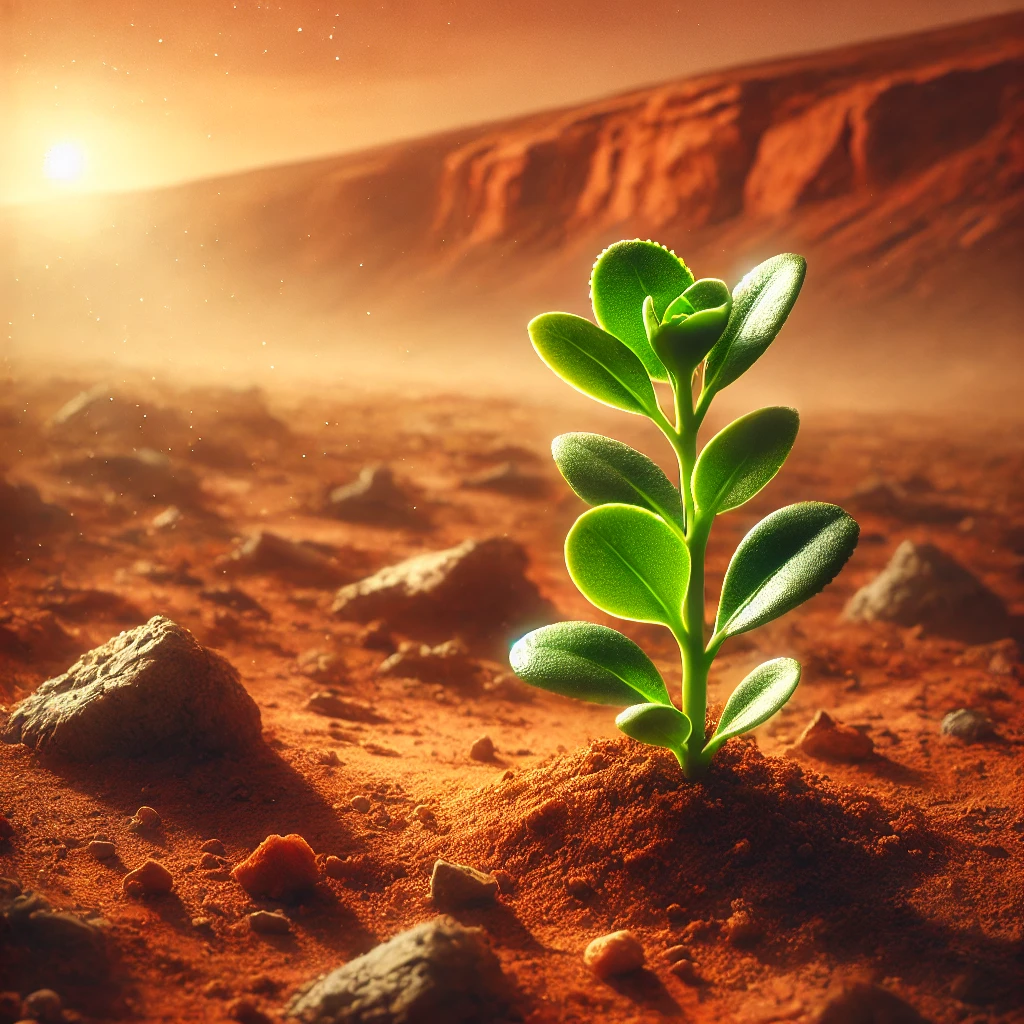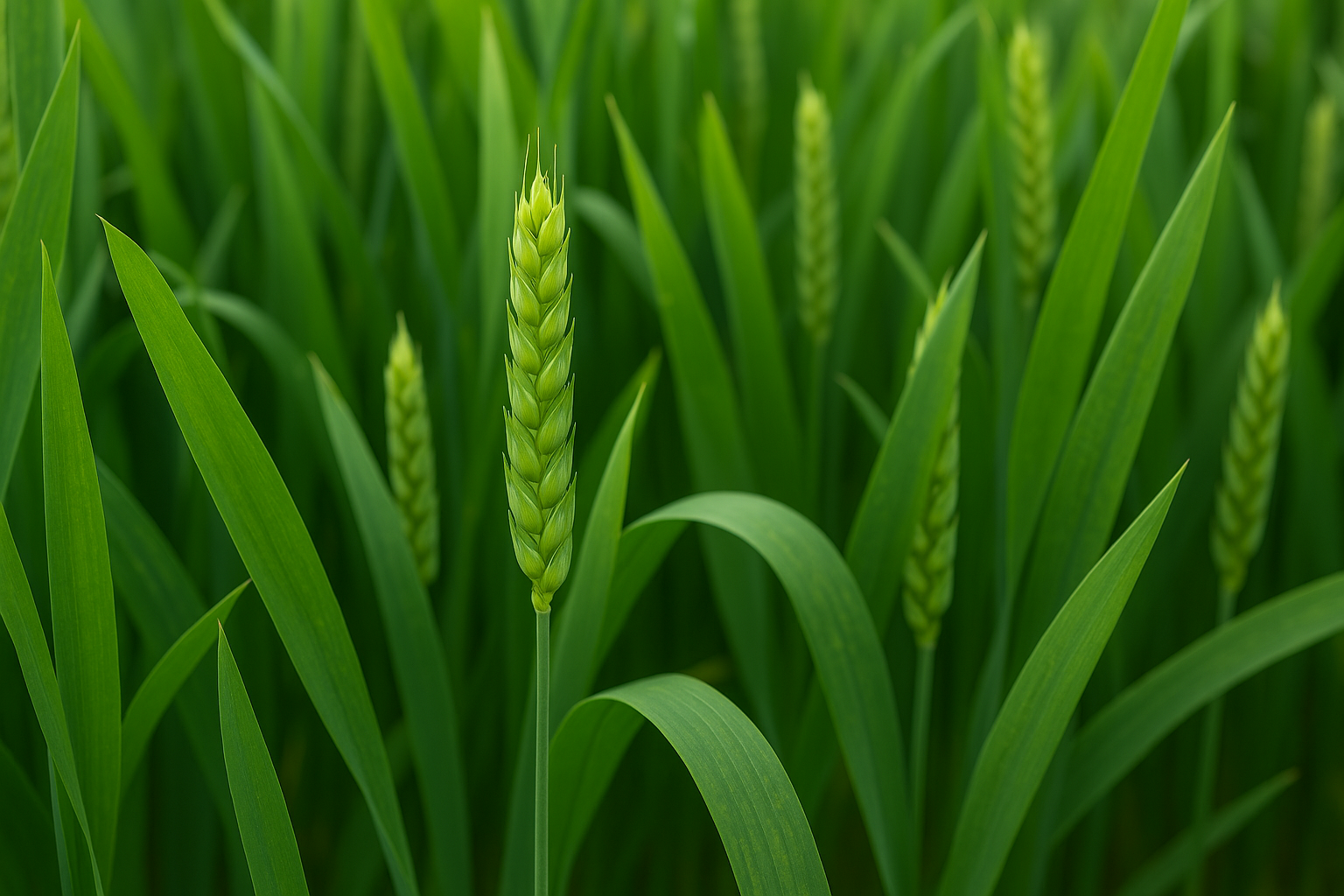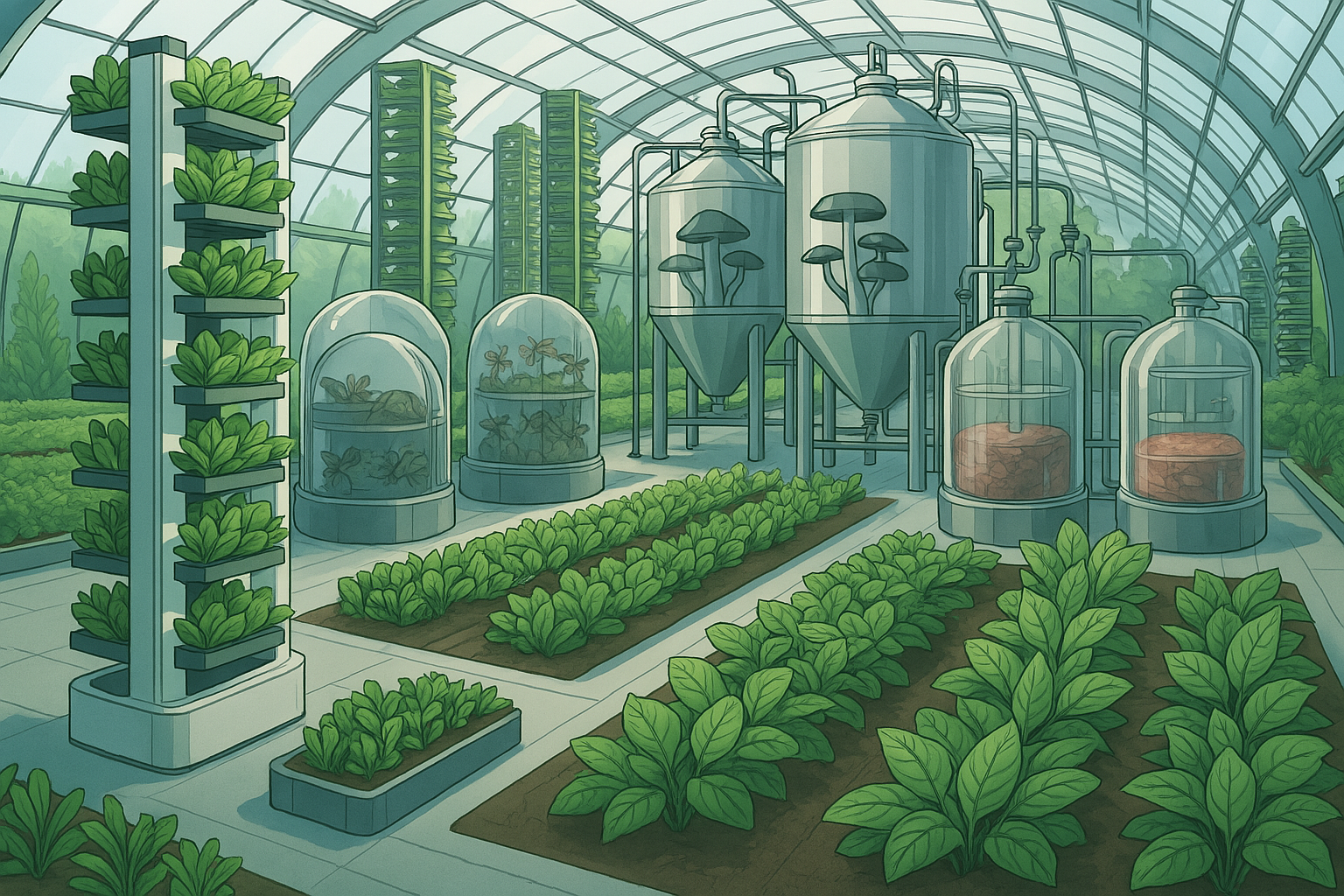As global populations rise and environmental pressures intensify, the demand for sustainable, efficient food production methods has never been more urgent. Aquaponics, a beautifully efficient system that merges aquaculture (raising fish) with hydroponics (growing plants in water), is emerging as one of the most promising answers to that demand. By creating a closed-loop ecosystem where fish and plants support each other’s growth, aquaponics offers a model for agriculture that’s both environmentally responsible and incredibly productive.
Understanding the Aquaponics Ecosystem
At the heart of an aquaponic system is a natural cycle — one that mimics the interdependence found in wild ecosystems. Fish are raised in tanks where they produce waste, primarily in the form of ammonia. This waste, while harmful to the fish in high concentrations, becomes the key to nourishing plants. Beneficial bacteria in the system break down the ammonia first into nitrites and then into nitrates — a form of nitrogen that plants can absorb and use for growth. As the plants take up these nutrients, they purify the water, which is then returned to the fish tanks. It’s a continuously circulating system that maintains balance without the need for artificial fertilizers or chemical additives.
This symbiotic relationship makes aquaponics not only highly efficient but also naturally sustainable. Every element in the system contributes to the health and productivity of the whole, reducing waste and resource use while maximizing output.
Why Aquaponics Matters in a Changing World
Aquaponics stands out as a powerful tool for sustainable agriculture, especially in areas where traditional farming is difficult or resource-intensive. One of the most compelling aspects is its ability to conserve water. In traditional farming, a significant amount of water is lost to evaporation, runoff, or inefficient irrigation. In aquaponics, water is recirculated throughout the system, drastically reducing consumption — by as much as 90% compared to conventional farming.
Beyond water conservation, aquaponics also eliminates the need for arable land. Because the plants grow in water rather than soil, these systems can be installed almost anywhere — in greenhouses, on rooftops, in urban warehouses, or even inside homes. This flexibility makes it possible to grow food in areas with poor or contaminated soil, arid climates, or limited space. In cities, where access to fresh produce can be limited, aquaponics brings food production directly to the people, reducing transportation costs and carbon emissions associated with food distribution.
Another advantage lies in its natural resistance to chemicals. Since anything introduced into the system could potentially harm the fish, growers avoid pesticides and synthetic fertilizers entirely. This results in cleaner, safer food — often grown to organic standards without the premium price tag. And unlike traditional hydroponics, which requires purchasing nutrient solutions, aquaponics generates its own nutrients from the fish waste, reducing ongoing input costs and environmental impact.
The Double Harvest: Protein and Produce
Aquaponics is uniquely efficient in its ability to produce both protein and vegetables in a single integrated system. While most farming methods focus on either plant or animal production, aquaponics combines the two in a way that’s not only harmonious but also highly productive. Fish such as tilapia, trout, or catfish can be harvested for consumption, providing a renewable source of lean protein. At the same time, the system yields a continuous supply of fresh vegetables, herbs, and leafy greens.
This dual-output nature makes aquaponics particularly valuable in food-insecure regions, where communities may struggle to access both protein and fresh produce. By supporting the growth of both in a single, closed-loop system, aquaponics offers a more complete nutritional solution.
From Backyard Systems to Global Solutions
One of the most appealing aspects of aquaponics is its scalability. A small tabletop system in a home can provide herbs and greens for a family, while a large-scale commercial operation can supply produce and fish to entire communities. Around the world, aquaponics is being embraced by everyone from urban homesteaders to high-tech agricultural startups.
In Singapore, where space is at a premium, vertical aquaponic farms are helping meet ambitious food production targets. In rural parts of Africa and Southeast Asia, low-cost systems are being used to combat hunger and empower local food production. In North America and Europe, entrepreneurs are turning to aquaponics to create local, sustainable alternatives to supermarket supply chains, offering fresh, hyper-local food to cities and towns.
These success stories demonstrate the adaptability of aquaponics across different climates, economies, and social settings. Whether it’s a backyard enthusiast growing tomatoes and tilapia, or a high-tech greenhouse operation producing tons of greens per year, the principles remain the same — efficiency, sustainability, and cooperation with nature.
Challenges and Considerations
Despite its many benefits, aquaponics isn’t without challenges. The initial setup can be costly, particularly for larger or commercial systems. Tanks, grow beds, pumps, and monitoring equipment all require an upfront investment, and not everyone has access to the technical knowledge needed to build and maintain a balanced ecosystem.
Water quality must be carefully monitored to ensure both fish and plants stay healthy. Parameters like pH, ammonia, nitrites, and temperature need regular checks, which can be intimidating for beginners. Additionally, the system typically relies on electricity to run water pumps and aerators, making it vulnerable to power outages unless backup systems are in place.
However, these hurdles are gradually becoming easier to overcome. Affordable kits and educational resources are widely available, and online communities are helping new growers troubleshoot problems and share success stories. As technology advances, more user-friendly systems are being developed, and the integration of automation tools is making it easier for people with no prior experience to succeed.
Getting Started with Aquaponics
For those curious about trying aquaponics, the best way to begin is with a small, manageable system. Start with hardy fish like tilapia or goldfish, and pair them with fast-growing, nutrient-hungry plants like lettuce, basil, or kale. Choose a simple system design — such as a media bed or deep water culture — and learn to monitor basic water conditions. There’s a learning curve, but also a great sense of satisfaction in seeing your first harvest grown from such a self-sustaining system.
As your confidence grows, so can your setup. With time, many hobbyists find themselves expanding to larger systems or even turning their passion into a business or community project.
A Vision for the Future of Food
Aquaponics is more than just a method of farming — it’s a philosophy rooted in balance, cooperation, and ecological wisdom. In a world where industrial agriculture has too often depleted soil, polluted water, and disconnected people from their food sources, aquaponics offers a fresh alternative. It shows us that food can be grown in harmony with nature, not at its expense.
By uniting fish and plants in a single system, aquaponics delivers not just a clever solution to our modern agricultural problems — but a hopeful vision for the future. One where cities grow their own food, communities build resilience through local production, and our relationship with the planet is one of mutual support.
Curious about starting your own aquaponic journey? Drop a comment below — let’s grow something together.
References
1. Food and Agriculture Organization of the United Nations. (2014). Small-scale aquaponic food production: Integrated fish and plant farming. Retrieved from http://www.fao.org/3/i4021e/i4021e.pdf
2. University of the Virgin Islands. Aquaponics Systems – Agricultural Experiment Station. Retrieved from https://ces.uvi.edu/AES/Aquaculture-Aquaponics
3. Aquaponics Association. (n.d.). Aquaponics resources and community projects. Retrieved from https://aquaponicsassociation.org
4. Upward Farms. (n.d.). Sustainable urban farming with aquaponics. Retrieved from https://www.upwardfarms.com
5. National Geographic. (2017). The Future of Farming Is in the Water. Retrieved from https://www.nationalgeographic.com/environment/article/aquaponics-future-of-farming
6. Backyard Aquaponics. (n.d.). Home systems, designs, and community forums. Retrieved from https://www.backyardaquaponics.com
7. Singapore Food Agency. (n.d.). 30 by 30: Transforming Singapore’s agri-food sector. Retrieved from https://www.sfa.gov.sg
8. Aquaponics Journal. (n.d.). Industry insights and case studies. Retrieved from https://www.aquaponics.com/aquaponics-journal-back-issues/










